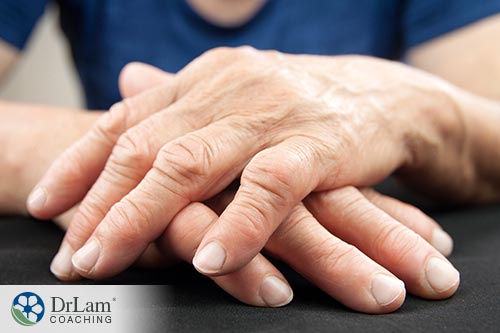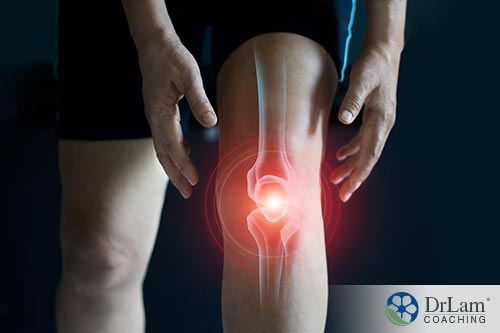 Rheumatoid arthritis (RA), a world-wide immune disorder, affects about one percent of the total population. Women outnumber men as victims of this disorder by 3:1. This disorder can leave the person suffering from it with severe deformities of the joints and can lead to disability if therapies do not work. Inflammation often becomes the most important focus of any intervention.
Rheumatoid arthritis (RA), a world-wide immune disorder, affects about one percent of the total population. Women outnumber men as victims of this disorder by 3:1. This disorder can leave the person suffering from it with severe deformities of the joints and can lead to disability if therapies do not work. Inflammation often becomes the most important focus of any intervention.
Medications used in conventional attempts at dealing with the inflammation so prevalent in rheumatoid arthritis often come with significant side effects. In contrast, regenerative medicine approaches can alleviate inflammation with far fewer side effects. In addition, these approaches work to repair the damage to joints caused by rheumatoid arthritis.
Compared to osteoarthritis, rheumatoid arthritis causes much more serious problems. Osteoarthritis comes because of long-term wear and tear on joints. But rheumatoid arthritis is an autoimmune condition in which the immune system attacks the lining of the joints, the synovial membrane, leading to erosion of the joints and physical deformity.
Signs and symptoms of this condition include tender and swollen joints, stiffness in the joints that seems worse in the morning and after exercise, fatigue, fever, and loss of appetite. In the beginning of the condition, smaller joints tend to be affected, usually on the same side of the body. However, with progression, other joints fall prey. Joints on both sides of the body often become affected.
Around 40% of those suffering from rheumatoid arthritis also suffer from symptoms that don’t include joints. Body structures other than joints that can get attacked by this condition include:
Inflammation causes the synovium surrounding your joints to thicken, eventually destroying cartilage and bone. In addition, once that occurs, the tendons and ligaments in the joints weaken, leading to deformity of those joints.
At this time, researchers and clinicians do not know the specific causes of rheumatoid arthritis. Clearly, genetic influences appear likely. However, these influences do not cause the condition alone. They only make a person with them more vulnerable to environmental factors that lead to the condition.
The environmental factors that serve as the trigger for the development of this autoimmune disorder include:
No cure for this condition currently exists. Conventional interventions include medications to alleviate inflammation and other symptoms. However, many of these medications bring with them significant side effects.
Some of the types of medications utilized include:
Exercises to keep joints flexible, assistive devices to lower the stress on affected joints, and surgery may become additional attempts at dealing with rheumatoid arthritis.
Alternative and regenerative medicine offer a different approach to dealing with rheumatoid arthritis. But the approach doesn't necessarily replace the conventional approach. Instead, it looks at the underlying causes of the condition.
Several components make up this approach. Platelet-rich plasma (PRP), stem cells, and exosomes are some of the ways regenerative medicine addresses rheumatoid arthritis.
 PRP provides growth factors in an effort to reduce inflammation and repair damaged joints. This component comes from blood and contains a high concentration of platelets and growth factors. The aim of PRP includes stimulating tissue repair.
PRP provides growth factors in an effort to reduce inflammation and repair damaged joints. This component comes from blood and contains a high concentration of platelets and growth factors. The aim of PRP includes stimulating tissue repair.
Mesenchymal stem cells make up another biological remedy for rheumatoid arthritis. Research shows the effectiveness of these stem cells. One study indicated a reduction in inflammatory cytokines and an increase in regulatory T cells. These results lasted from 3 to 6 months.
Research and clinical practice show peptides to be very safe and very effective. Several peptides appear to be useful for RA, including:
Cell particles shed by stem cells, exosomes contain signaling proteins (integrins), messenger RNA, and other substances used in healing. Among their many bioactive effects are:
They inhibit the release of inflammatory cytokines. And they increase anti-inflammatory cytokines. They inhibit Th17 cells to reduce inflammation. In addition, they stimulate osteochondral regeneration, important in healing in rheumatoid arthritis.
When stress in any form hits your body, a set of responses activate. The end of these responses is a stimulation of your adrenal glands to release cortisol, the stress-fighting hormone. This makes up an effort to fight the effects of stress. But as stress continues and becomes chronic, the burden on the adrenal glands increases. At some point, the demand becomes too great and your adrenal glands become fatigued, unable to supply the needed cortisol. Here, Adrenal Fatigue Syndrome (AFS) symptoms begin. At first, these symptoms are vague and may not show up in standard lab tests. As AFS continues, the symptoms grow in severity, ultimately leaving the person bedfast.
The NeuroEndoMetabolic (NEM) Stress Response describes another natural process by which your body attempts to deal with the effects of stress. Made up of six circuits, each of which contains three organs or organ systems, these circuits overlap to a degree. Therefore, they are interrelated, and when something happens to make one of these circuits dysfunctional, others are also affected. If these circuits become dysfunctional, severe symptoms may result.
 Inflammation begins anytime stress hits your body. It responds to your body’s need to heal itself from any kind of damage. Inflammation helps the body fight against and rid itself of whatever is doing it harm. But problems arise when inflammation rages out of control.
Inflammation begins anytime stress hits your body. It responds to your body’s need to heal itself from any kind of damage. Inflammation helps the body fight against and rid itself of whatever is doing it harm. But problems arise when inflammation rages out of control.
The three components of the inflammation circuit, the immune system, microbiome, and gut, can get out of balance when under significant stress. This dysbiosis may affect the gut first.
When dysbiosis occurs in your gut, one problem that arises brings on what is called leaky gut. This occurs when the normally tight junctions between the epithelial cells that line your gut become loose. This allows undigested food particles, viruses, bacteria, and other pathogens access to your bloodstream.
Once this happens, your immune system activates to fight and destroy these invaders of your body. Inflammation is one of its tools. However, leaky gut allows many of these foreign particles into the bloodstream, overwhelming your immune system.
This may cause your immune system to become hyperactive, causing more inflammation, and setting up the potential for autoimmune conditions. Autoimmune conditions happen when your immune system begins attacking healthy cells as well as those identified as invaders. Therefore, this type of condition happens in rheumatoid arthritis when inflammation begins affecting the synovial lining of your joints.
Another issue that occurs comes when the microbiome becomes unbalanced due to gut issues. A lack of good absorption of nutrients with leaky gut leads to an imbalance between the ‘good’ bacteria and ‘bad’ bacteria in the microbiome. This imbalance then leads to small intestine bacterial overgrowth (SIBO). Likewise, SIBO affects your gut, adding to the issues there. It also adds to the malabsorption of nutrients, leading to malnutrition. This becomes yet another source of stress that affects AFS.
All of this leads to fatigue, loss of nutrients, bloating, and other problems faced by those with AFS.
The cycle established by these problems in the gut, microbiome, and immune system all increase the presence of inflammation. Also, they increase the risk of autoimmune disorders like rheumatoid arthritis.
In addition to the problems caused by dysbiosis in the gut and microbiome, 40% of people with RA also experience problems in non-joint parts of the body. This includes the potential for gut dysbiosis. Therefore, there is a risk for a negative cycle of gut dysbiosis leading to the development of RA and RA potentially causing gut dysbiosis.
These issues with the inflammation circuit combined with the pain and deformity seen with rheumatoid arthritis add to the stress your body experiences. Therefore, the more stress you encounter, the more severe your symptoms of AFS can become. In addition, with increasing severity of AFS symptoms comes increasing inflammation as more damage is done to the body.
Regenerative medicine seeks to deal with the underlying causes of RA using peptide therapy and stem cell therapy along with others. These remediation efforts seek to heal the gut and restore balance to it and your microbiome. Restoration of these organs then leads to a restoration of the balance of your immune system as well. According to this approach, diet is the key to the remediation of RA.
 This autoimmune condition occurs when inflammation attacks the synovial lining of your joints. In addition, the tendons and ligaments in those joints become weaker and stretch, causing the deformity of the joints that comes with RA.
This autoimmune condition occurs when inflammation attacks the synovial lining of your joints. In addition, the tendons and ligaments in those joints become weaker and stretch, causing the deformity of the joints that comes with RA.
Rheumatoid arthritis also can attack non-joint places in your body. About 40% of people suffering from RA experience these kinds of problems.
While genetic influences affect your risk of developing RA, these factors do not cause the condition in themselves. But, those who are genetically at risk for the condition become more susceptible to the environmental conditions that may trigger RA. Some of these conditions include smoking, environmental toxins, dysbiosis of the gut, and chronic infections.
Conventional care attempts involve powerful medications to reduce inflammation and alleviate damage and pain. Also, these medications bring with them significant side effects, some of which can become long-term.
Regenerative interventions work at targeting the underlying root causes of the inflammation and damage found in rheumatoid arthritis. These interventions include peptide therapy, platelet-rich plasma, stem cell therapy, and exosomes. These interventions are all given by an experienced practitioner, so it's important to find someone who understands your body.
If you are suffering from rheumatoid arthritis, here are a few things you can do to alleviate the situation.
However, whatever course of action you decide to take, please do so with the guidance of your healthcare practitioner who will assess the benefits for you as well as recommending a correct dosage of a supplement.
If you would like to know more about or need assistance with any of the recommendations above or would like to know about regenerative medicine for rheumatoid arthritis, the team at Dr. Lam Coaching can help. We offer a free** no-obligation phone consultation at +1-626-571-1234 where we will privately discuss your symptoms and various options. You can also send us a question through our Ask The Doctor system by clicking here.
Regenerative medicine looks at the root causes of rheumatoid arthritis and not just the symptoms. Using peptide therapy, stem cell therapy, platelet-rich plasma, and exosomes may deal with the underlying issues and relieve symptoms better than conventional therapy approaches.
